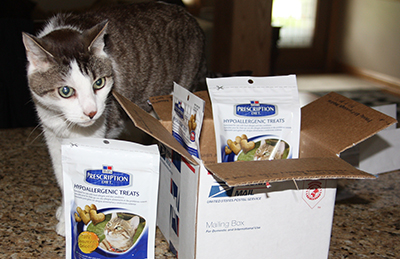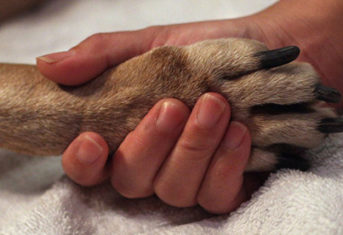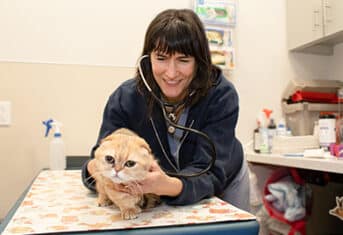Successfully Switching Your Pet to a Prescription Diet

Successfully Switching Your Pet to a Prescription Diet
All veterinarians, not just the specialists at the Animal Medical Center, use specially formulated prescription diets to help manage a variety of diseases in pets. For example, low protein diets are used in pets with liver shunts and kidney disease. Pets with arthritis benefit from diets rich in anti-inflammatory nutrients. But, pets don’t always want to give up their favorite brand of food for something you define as “better for them.” Here are some suggestions on how to get your favorite fur baby to accept a new diet.
Go Slow
Many diseases requiring a prescription diet occur in older animals that may be more set in their ways than a young puppy or kitten. Put out a spoonful of the new food on a separate plate from your pet’s regular food. It might take a few days for your pet to sample the new offering, but if she does, gradually increase the amount offered while decreasing the regular food. If your veterinarian recommends a prescription diet, ask if there are different brands or flavors available so you can change up the food while still getting the benefits of a prescription diet. Warm food stimulates the taste buds, so try microwaving the food for few seconds before offering it to your pet.
Keep it Fresh
If you feed canned food, recommended for pets with urinary tract problems or bladder stones because canned food has a high water content beneficial in these diseases. But after an hour or two of sitting in a bowl on the kitchen floor, the food gets crusty as the beneficial water evaporates. There are now bowls with an automatically opening and closing lid. As your pet approaches, the lid opens and allows your pet to consume fresh, soft and tasty food. When your pet finishes eating, the bowl automatically closes. How you store your pet’s food also impacts the taste. For tips on storing pet food to optimize freshness read this information from Hill’s Pet Nutrition.
Tasty Topping
Some pets need a bit of encouragement to try a new diet. Pretend the new food is a treat and use it as a reward. Once your pet readily takes the new “treat,” start putting it in her bowl. Other pets need a jumpstart of tasty food on top of the new food. Tasty bonito tuna flakes or powder make for a low-calorie taste sensation. Consider spicing up the prescription food with some of the new pet food condiments like Petschup or Meowstard or one of the commercially available gravies. Before you add anything to a prescription diet, make sure your veterinarian approves of the choice.
The Other Pet
Inevitably, the pet you want to eat the prescription diet refuses and the pet that doesn’t need it licks the bowl clean. If you have this problem, look into bowls that use radio frequency identification transponders aka your pet’s microchip to unlock a bowl containing the prescription diet. This ensures your healthy pet will not steal the prescription diet intended for your sick pet.
Once you get your pet eating the prescription diet, he will soon be on the road to recovery.































